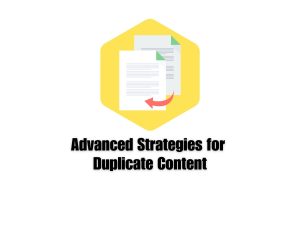
Case Studies: Successful Usage of Video Scripts
In the digital age, video content has become an integral part of online communication strategies for businesses and organizations across various industries. While videos are
In the realm of SEO, canonical tags serve as crucial signposts, directing search engines to the ‘preferred’ version of a page when duplicate or similar content exists. However, their implementation rarely comes without a hiccup. This blog post will delve into some common mistakes when implementing canonical tags and provide tips on how to avoid them.
Canonical tags play a vital role in preventing ‘duplicate content’ issues, which can dilute your SEO efforts by confusing search engines about which page to index and rank. They inform search engines that certain similar URLs are actually one and the same, allowing for cleaner indexing and more effective SEO.
Sometimes, canonical tags are not consistent across pages. For instance, Page A might have a canonical URL pointing to Page B, but Page B doesn’t reciprocate.
How to avoid: Ensure the canonical URL on your ‘original’ page matches exactly to the URL of the duplicate pages.
Sometimes, the link specified in the canonical tag is blocked in the robots.txt or with a ‘noindex’ tag. This practice confuses search engines and may cause them to overlook your canonical tags.
How to avoid: Always check that the canonical URL specified is accessible and indexable by search engines.
Some websites erroneously canonicalize all their pages to their homepage in an attempt to consolidate link equity. This is misleading to search engines and can negatively impact SEO.
How to avoid: Establish a relevant canonical link for each page. The canonical page should have the same content or very similar content as the duplicates.
A common misstep is creating a chain of canonical URLs where Page A points to Page B, Page B points to Page C, and so on. This is confusing to search engines which prefer a linear and simple structure.
How to avoid: Aim for a ‘one-to-one’ relationship with your canonicals whenever possible. Each duplicate page should point directly to the original canonicalized page.
Canonical tags are not just for duplicate content. They’re also for similar content! Ignoring canonical tag on pages with similar but not identical content can lead to issues with search engines interpreting the pages as duplicates.
How to avoid: Use canonical tag on pages with similar content, variations of the same page, or pages with different sorts or filters applied.
Canonical tag are a powerful tool when used correctly but can be detrimental when used improperly. Avoiding these common mistakes and maintaining a clear, consistent structure with your canonical links can ensure cleaner indexing, reduce duplicate content issues, and improve overall site SEO. It’s all about clarity and consistency!

In the digital age, video content has become an integral part of online communication strategies for businesses and organizations across various industries. While videos are

Duplicate content refers to identical or similar content that appears on multiple URLs within a website or across different websites. While duplicate content is common





“LeadsView did an excellent job with my project and will definitely recommend. Easy to work with, flexible and good quality of work. I am more than happy to recommend them."




















Copyright 2023 © LeadsView. All Rights Reserved
